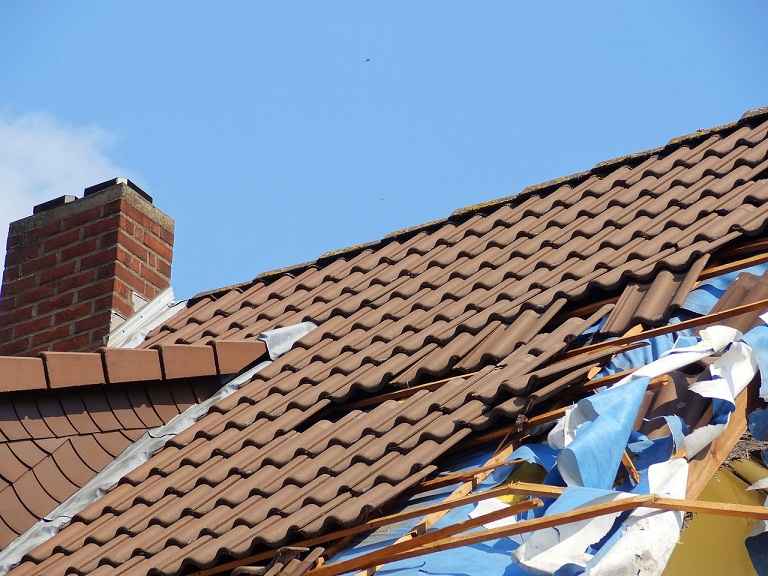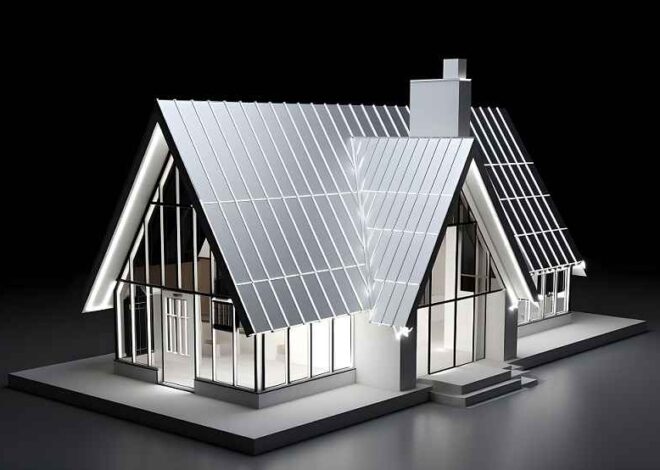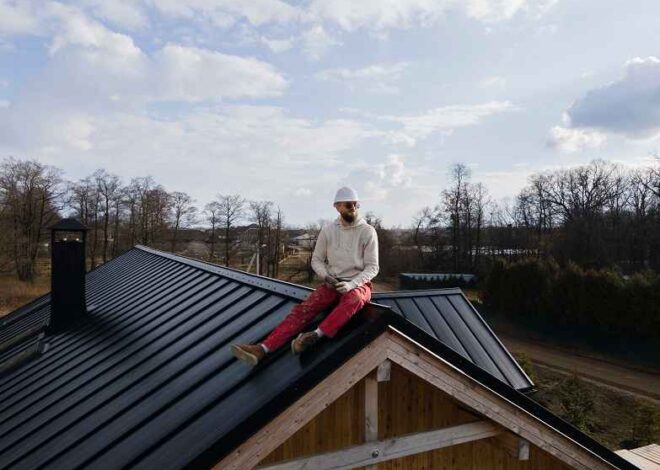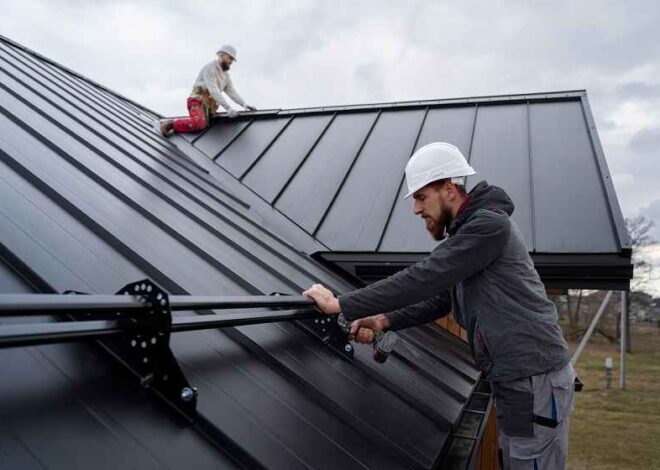
The Ultimate Guide to Preventing Roof Damage Caused by Trees
The Ultimate Guide to Preventing Roof Damage Caused by TreesWhen it comes to protecting your home, your roof is the unsung hero—defending against harsh weather, keeping you cozy during chilly nights, and shielding you from the elements. But did you know that those majestic trees lining your property could be plotting a surprise attack on your rooftop? From falling branches to pesky leaves clogging gutters, trees can wreak havoc on even the sturdiest of roofs if you’re not careful. In this comprehensive guide, we’ll explore essential strategies to keep your roof safe from nature’s most beautiful yet potentially damaging features. Whether you’re a seasoned homeowner or just embarking on this journey, get ready to uncover expert tips and tricks that will help you preserve your roof’s integrity while enjoying the beauty of nature around you! Let’s dive in and ensure that both trees and roofs can thrive together harmoniously!
Introduction to the problem of roof damage caused by trees
Roofs are our first line of defense against the elements, but they can be vulnerable to one unexpected threat: trees. While these towering giants provide shade and beauty to your property, they also pose a significant risk if not properly managed. Unkempt branches can scrape against shingles, fallen limbs can create catastrophic damage during storms, and invasive roots may undermine structural integrity. Ignoring tree maintenance could lead to costly repairs that leave you with more than just an itchy wallet.
But don’t worry! With the right knowledge and proactive care strategies, you can protect both your roof and your trees. Let’s dive into how you can effectively prevent tree-related roof damage while enjoying the benefits that nature has to offer.
Understanding how trees can damage roofs
Trees can be both beautiful and beneficial, but they also pose risks to your roof. Branches that overhang may snap during storms or high winds, leading to significant damage.
Additionally, leaves and debris from trees can accumulate in gutters. This buildup causes water to pool on the roof, increasing the likelihood of leaks and rot.
Roots present another concern. They often seek moisture beneath your home’s foundation, leading to structural issues that can indirectly affect your roof’s stability.
Pine needles are particularly troublesome as they trap moisture against shingles, accelerating wear and tear on roofing materials. Understanding these threats is key for homeowners seeking effective tree damage prevention strategies. Regular assessments of proximity between trees and roofs will help identify potential hazards before they become costly repairs.
Identifying high-risk trees near your home
When assessing your landscape, certain trees raise red flags for roof safety. Look for those with weak or dead branches. These are prime candidates for future hazards.
Next, consider the tree’s proximity to your home. Overhanging limbs can easily cause issues during storms or high winds. Trees that lean toward your house deserve particular attention.
Pay close attention to species known for aggressive growth, such as willows and silver maples. Their expansive root systems and brittle wood can lead to unexpected damage.
Lastly, examine the overall health of nearby trees. Diseased or infested trees not only threaten their surroundings but also create a cascading risk to structures in close range. Regular check-ups on these high-risk candidates can save you from costly repairs later on.
Preventing roof damage through tree maintenance and care
Tree maintenance is essential for protecting your roof from damage. Regular pruning helps keep branches at a safe distance from your home. This simple act can prevent costly repairs down the line.
When planting new trees, consider their mature height and spread. Position them wisely to avoid future conflicts with your roofline. Choosing the right species can make all the difference in potential risks.
Routine inspections of nearby trees are crucial. Look for signs of disease or instability that could lead to unexpected falls. Addressing issues early on minimizes hazards.
Educating yourself about tree care also pays off in prevention efforts. Understanding growth patterns enables you to anticipate changes over time. A proactive approach keeps both your trees healthy and your roof intact, ensuring peace of mind amid nature’s beauty.
-
Pruning techniques to minimize risk of falling branches
Pruning is essential in maintaining the health of your trees and protecting your roof. Regularly trimming branches reduces the risk of falling debris during storms or high winds.
Focus on removing dead or dying branches first. These are more likely to break off and cause damage. Use clean, sharp tools for a clean cut; this promotes faster healing for the tree.
Consider thinning out crowded areas as well. This not only enhances air circulation but also strengthens the remaining branches by reducing weight strain.
Make it a point to prune at strategic times, such as late winter or early spring, when trees are dormant. This helps minimize stress on the tree while allowing you to see its structure clearly.
Always remember to keep an eye on branch length—those that hang too close to your roof should be trimmed back significantly. It’s all about creating space between nature and your home.
-
Tips for proper placement of new trees on your property
When planting new trees, placement is key to avoiding potential roof damage in the future. Start by considering the height and spread of your chosen tree species at maturity. This will help you gauge how close it can safely be positioned to your home.
Look for areas that offer adequate sunlight while keeping trees a safe distance from overhanging eaves or gutters. A good rule of thumb is to plant trees at least 15 feet away from the house.
Also, think about wind patterns and storm exposure. Trees planted too close to structures are more vulnerable during high winds, increasing the risk of falling branches.
Lastly, avoid planting near power lines or other utility infrastructure. This not only protects your roof but also helps prevent interference with electrical services down the line.
-
Importance of regular tree inspections and upkeep
Regular tree inspections play a crucial role in maintaining both tree health and the integrity of your roof. Trees can develop weaknesses over time, making them susceptible to damage from wind or storms. Routine checks allow you to spot these issues early.
Upkeep is equally vital. Dead branches, pest infestations, or diseases can threaten not just the trees but also nearby structures. By regularly caring for your trees, you minimize risks and prolong their lifespan.
Consider enlisting an arborist for professional assessments if you’re unsure what to look for. They can offer valuable insights into tree conditions that may go unnoticed by the untrained eye.
Moreover, keeping a consistent schedule ensures that your landscape remains safe and aesthetically pleasing while protecting your home from potential hazards related to falling branches or debris. A little attention now can save you significant trouble later on.
Protective measures for existing trees near your home
Installing root barriers can be an effective way to manage tree growth. These structures help direct roots away from your home’s foundation and roof, reducing the chances of damage. Consider placing these barriers when planting new trees or assessing existing ones.
Support systems for weak branches are equally essential. Using cables or braces can prevent limbs from falling during storms or high winds. This simple adjustment can save you from costly repairs down the line.
Regular inspections play a crucial role in maintaining tree health as well. Look out for signs of disease, decay, or structural weakness in nearby trees. Addressing issues early will mitigate risks associated with potential branch failures.
Don’t underestimate mulch around your trees either! It helps retain moisture while discouraging pests that could weaken their structure, ensuring strong and healthy growth over time.
-
Installing root barriers or deflectors
Root barriers or deflectors are essential tools for protecting your roof from potential tree damage. These structures serve as a protective shield, directing roots away from vulnerable areas.
When you install a root barrier, it helps to control the growth of tree roots. This is particularly useful if you have large trees nearby that pose a risk to your home’s foundation and roofing system.
Materials can vary; some barriers are made from solid plastic while others use more environmentally friendly options like biodegradable fabrics. Choose what best suits your needs.
Proper installation is crucial. Make sure they extend deep enough into the ground to effectively redirect root growth without harming the tree itself.
Regular checks on these barriers will ensure they remain effective over time, providing peace of mind as well as safeguarding against unexpected damage caused by encroaching roots.
-
Using support systems for weak or damaged branches
When dealing with weak or damaged branches, using support systems can be a game changer. These systems provide stability and reduce the risk of falling limbs that could cause significant roof damage.
One effective method involves installing cables or braces to reinforce the branch structure. This technique helps distribute weight evenly, preventing stress on vulnerable areas.
Another option is using props or stakes for larger branches that lean precariously. These supports offer immediate assistance while ensuring the tree remains healthy over time.
Regular monitoring of these systems is essential. Weather changes and growth patterns can affect their effectiveness, so keeping an eye on them will help maintain safety around your home.
Consider consulting a professional arborist if you’re unsure about what system would work best for your trees. Their expertise can guide you in making informed decisions to protect both your trees and property from potential damage.
Common mistakes to avoid when dealing with trees and roofs
Many homeowners underestimate the importance of selecting the right tree species. Planting fast-growing or brittle trees too close to your roof can lead to significant issues as they mature.
Another common mistake is neglecting regular maintenance. Ignoring routine pruning can result in overgrown branches that pose direct threats during storms or high winds.
Some people try DIY trimming without proper knowledge, which may cause more harm than good. Incorrect cuts can weaken a tree’s structure and increase its risk of falling.
Failing to monitor nearby trees for signs of disease is also risky. Illness can compromise stability, making them more likely to drop limbs unexpectedly.
Lastly, overlooking local regulations regarding tree placement might lead to trouble with your neighbors or municipal authorities. Always check guidelines before planting new greenery near your home.
Conclusion: The importance of proactive tree maintenance in preventing costly roof repairs.
Proactive tree maintenance is essential for protecting your roof and home from costly damage. When trees are well cared for, the risk of falling branches or debris can be significantly reduced. Regular inspections allow you to catch potential issues before they escalate into serious problems.
By employing proper pruning techniques, placing new trees wisely, and maintaining existing ones with care, you create a safer environment around your property. Installing protective measures like root barriers and using support systems for weak branches can also provide an added layer of security.
Taking these steps not only preserves the integrity of your roof but also enhances the overall health of your landscape. A little effort in tree management goes a long way in preventing unexpected repair bills and ensuring peace of mind as a homeowner. Prioritize tree damage prevention today to safeguard your investment tomorrow.


